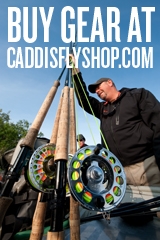Soft hackles are an often overlooked but always an important element of our trout fly fishing tackle complement. Here is a short video where I review some of the best soft hackle feather materials that we all have access to these days, with soft hackle flies as our search image.
Each of the feather types featured here offers excellent qualities for creating soft hackle flies, and yes, there are times when small soft hackles are just what summer steelhead want to eat. Fish the upper Deschutes, Upper Rogue, the Rogue Canyon, or the North Umpqua, and Klamath – if you put your time to good use, you are likely to find evenings when a size #10 to #16 soft hackle will be taken with confidence by summer steelhead anywhere from July through October.
Browse this video and my notes below about these great feathers. Hope this tutorial helps you tie your best soft hackle trout and steelhead flies ever.
Hungarian Partridge (full skin): this is possibly the best source of soft hackle hackles ever. Domestically bred and raised birds are perfection, and available in natural and dyed colors. I use feathers from the tip of the skin for #16s down to feathers over the back for #10s. Feathers at the tip and sides of the skin are black and white barred, feathers straight down the back are brown/bronze striped. The bars are fine and the fish love the look of flies tied with partridge as much as we love their traditional look. Zero waste and the feathers are sorted for us on the skin by size. Partridge feathers are relatively short, so I find I must be quite slow and easy winding them
Metz Grizzly Hen Capes: these are another amazingly versatile source of soft webby feathers, easy to tie with, and we can use these Metz hen cape feathers for our smallest soft hackles and our steelhead Silver Hiltons also. Oh yes, the tips of these feathers allow us to create wings on dry and wet flies from tiny to steelhead size. These hen cape feathers are long enough that it is fairly easy to wind one to four wraps of hackle and still have plenty of feather to hang on to. Zero waste, wide range of flies, and ease of use are major advantages.
Starling Skins: I had always wondered about this product and who was using starling feathers for what. Well, now I know. These are apparently used as cheeks on traditional streamers and Atlantic Salmon flies, but they also shine if we want to tie small soft hackles with dark grey hues. These starling skins offer very low price, very fine feathers and zero waste. The feathers are short and fine, they wind nicely, but I had to be very careful with my nubby salmon fly tying fingers and handle these feathers with a delicate touch. Too short to tie with fingers only, these will require you to pull out and apply your hackle pliers. One or two turns of these feathers and your soft hackle is ready to swim.
Whiting Brahma Hen Saddle: This is my preferred hackle for larger soft hackles, lake wet flies in the #8 & #10 range, and similar size summer steelhead wet flies. Zero waste, size graded on the skin, and nice barring. The feathers are denser than partridge but the overall barring is very similar.
Whiting Hen cape: these have all the properties as the Metz Hen Capes discussed above, but are available in browns and duns. Easy to work with, exquisite fine feather stems that wind marvelously, and never any waste. Soft hackles, wings, and collars on all manner of wet flies, streamers, and nymphs.
Wapsi India Hen capes: these are a more colorful analogy to starling skins, beautifully marked, easy to tie soft hackles, wings, beards and collars on all manner of small trout flies. Hummmmm. Bluegill would take these flies too, methinks. These also call for a delicate hand, like the Partridge and Starling feathers, but the care is worthwhile when you see the finished fly.
Soft hackle flies can imitate emerging Mayflies, Caddis flies, midges, and just plain old trout food. Sometimes we think we know what we are imitating, but I think sometimes trout and steelhead just take these little wisps of a fly because they look interesting and sort of like food. My personal preference for tying soft hackles is to use from one to three turns of hackle. In other words, I like to make soft hackle flies fairly sparse. Three turns of starling is about as dense as two turns of Metz or Whiting hen hackle, because the Starling is a finer fiber feather. The Whiting Brahma Hen Saddle is perhaps the most dense fibered feather of the ones reviewed here, and I prefer these for flies in the Carey Special family to imitate big juicy lumbering caddis struggling to the surface to emerge. Keep in mind, also, that most of these feathers make great collars on nymphs like the Prince and our good old standard wet flies like the Royal Coachman, Leadwing Coachman, and oh yes, I almost forgot …
Remember how effective a Grey Hackle Peacock with red or yellow tail was in years gone by? Let’s be clear. These flies, tied with a Metz Grizzly Hen Cape in sizes #12 – #16 are still deadly for trout, and in sizes #4-#8 are wonderful summer steelhead flies too.
JN





GREAT video. I was talking to a fellow fisherman at 20 mile crk in Erie, pa. Who showed me some soft hackle nymphs he was using. When I returned home to Baltimore I tried to tie one. My (Cockbird) hackle was just too stiff, and did not provide the movement desired during the presentation. Your video was of real value to me……now, if I can just find a partridge skin.